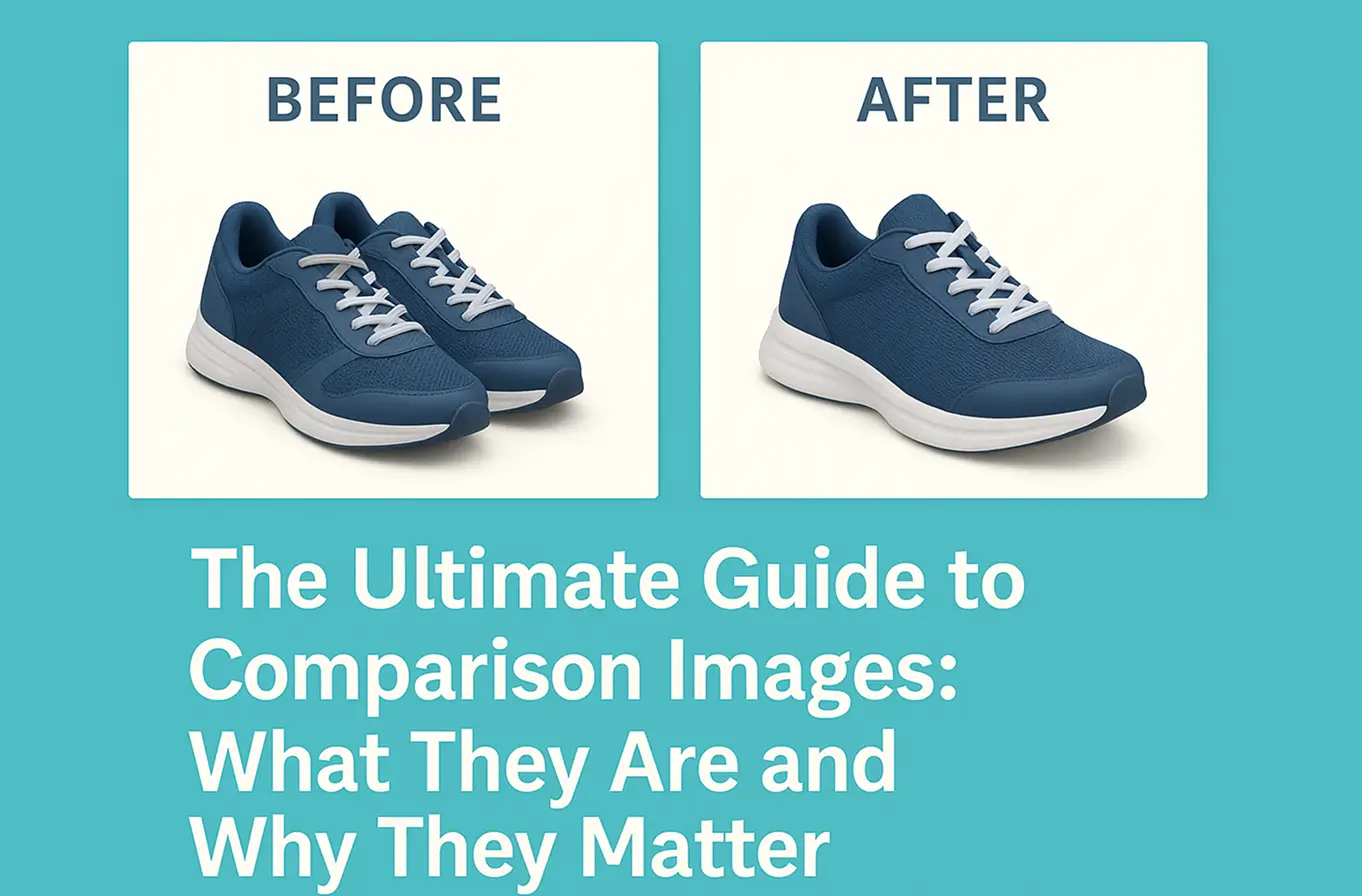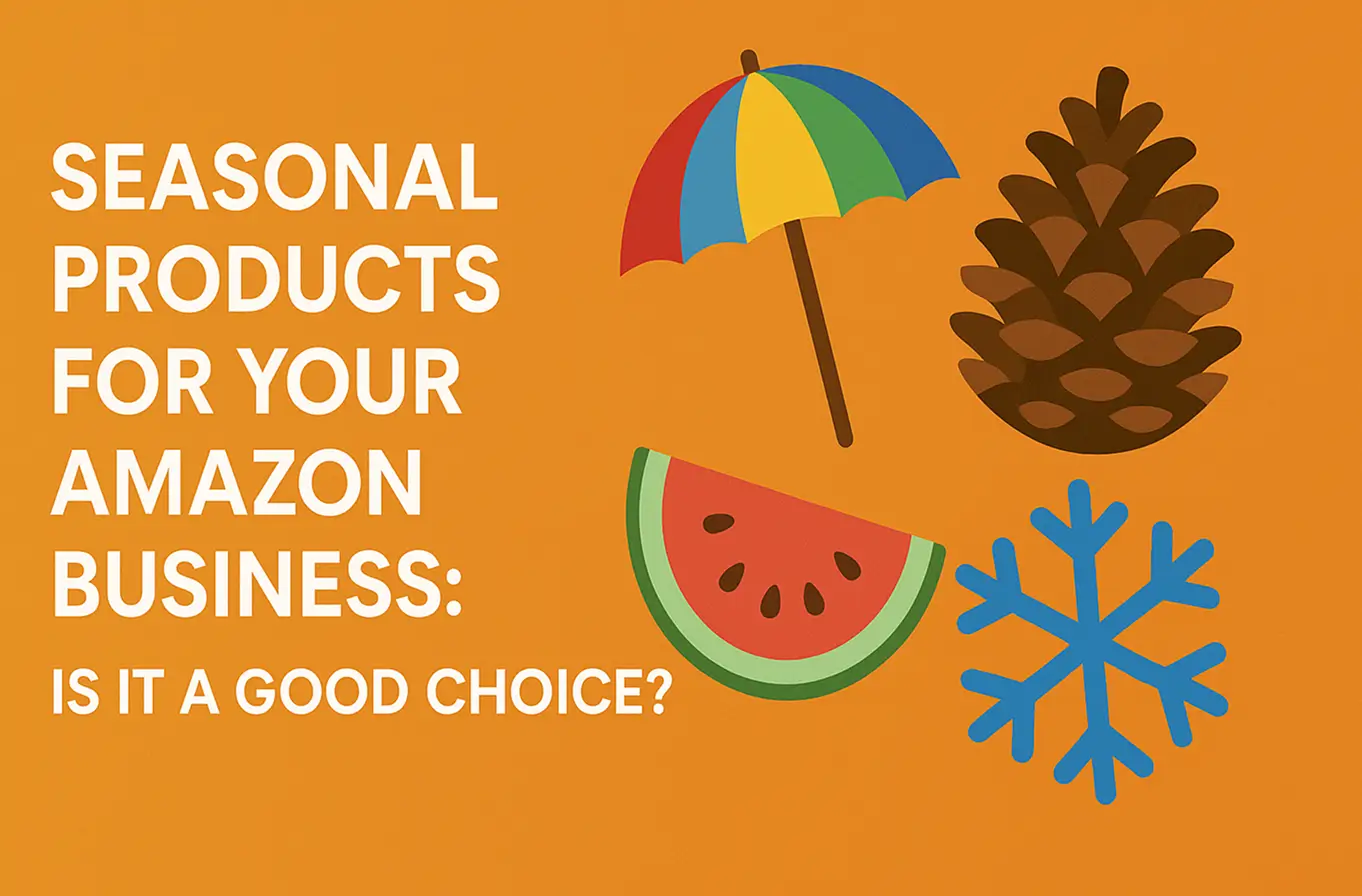
May 14, 2025
The Ultimate Guide to Comparison Images: What They Are and Why They Matter
In today’s competitive online marketplace, visual content makes or breaks the customer journey. Whether you’re selling on your website, on Amazon, or through social media, the quality of your image's influences trust, conversions, and ultimately—sales. One of the most effective yet underused tactics is leveraging comparison images. These side-by-side or before-and-after visuals help customers quickly understand differences, benefits, and outcomes immediately.
In this comprehensive guide, you'll learn what comparison images are, how to create them, why they’re critical for Amazon product photography, and how 3D product rendering can elevate your visual strategy. We’ll also share best practices, tools, real-world examples, and answer frequently asked questions.
What Are Comparison Images?
Definition of Comparison Images
Comparison images are visual content designed to show two or more products, stages, or results side by side. These visuals aim to make differences instantly clear to the viewer, reducing the cognitive effort needed to compare features, quality, or outcomes.
For example, a skincare brand might show before-and-after images to highlight how their product reduces wrinkles. A tech brand might display two phones side by side, showing the difference in screen size, battery life, or camera quality.
Benefits of Using Comparison Images
- Help Buyers Make Faster Decisions: Shoppers don’t have time to read endless descriptions. Visuals communicate faster and more clearly than text.
- Increase Trust: When you show transparent, realistic results, you build credibility.
- Highlight Unique Features: Comparison images are great for showing why your product is better than the competition.
- Reduce Returns: Clear expectations help customers buy the right product, reducing dissatisfaction.
Why Comparison Images Boost Conversions
The Psychology Behind Visual Comparisons
According to HubSpot, content with relevant images gets 94% more views than content without. Humans process visuals 60,000 times faster than text. When you provide side-by-side comparisons, customers don't have to mentally "guess" the difference—they see it instantly.
Trust and Transparency Through Visual Proof
Real-life before-and-after photos, especially when used in industries like fitness, cleaning, or beauty, offer visual proof that builds authenticity. Consumers trust what they can see. A quote from Neil Patel, a leading digital marketing expert, sums this up perfectly:
"Visual content converts because people trust what they can see with their own eyes."
Different Types of Comparison Images
| Type | Description | Example Use Case |
|---|---|---|
| Side-by-Side Product Comparisons | Compare features of two or more products | Tech gadgets, apparel |
| Before and After Comparisons | Show transformation or improvement | Skincare, fitness, cleaning products |
| Real vs. 3D Rendering Comparisons | Display real photo vs. 3D-rendered image | Furniture, tech products |
| Amazon Product Comparisons | Demonstrate why your product is better | Any product listed on Amazon |
Perfect for showcasing two or more products with distinct features. For instance, if you sell coffee machines, you can compare brew time, capacity, and price side by side.
Before and After Comparisons
Before-and-after images work wonders in industries where visual transformation matters. Fitness programs, home cleaning services, and skincare brands use these to show real results.
Real vs 3D Product Rendering Comparisons
Incorporating 3D product rendering alongside real photos gives customers both the hyper-realistic look of renders and the authentic feel of real photography. This is especially useful in furniture, electronics, and fashion.
Comparison Images in Amazon Product Photography
Amazon’s marketplace is crowded. Comparison images help products stand out by clearly showing size, quality, or feature improvements over competitors.
How to Create Effective Comparison Images
Planning Your Visual Story
Start by identifying what you want to compare. Is it product features? Results? Quality? Knowing your audience's pain points and buying questions will help craft more effective visuals.
Photography Best Practices
- Consistent Lighting: Natural or softbox lighting works best.
- Similar Angles: Keep the perspective consistent across comparisons.
- Neutral Backgrounds: Avoid distractions; white backgrounds are ideal for Amazon product photography.
- High Resolution: Low-quality images reduce trust.
When to Use 3D Rendering:
- When you don’t have the physical product yet.
- When you need to show different colors or configurations.
- To reduce photography costs over time.
- Scalable: Easy to produce multiple angles.
- Flexible: Change colors, textures, or features.
- Realistic: Modern rendering tools produce lifelike results.
Comparison Images for Amazon Product Photography
Why Amazon Sellers Need Comparison Images
Amazon’s visual-first shopping experience demands clear, compelling images. Comparison images can:
- Differentiate your product in search results.
- Reduce buyer hesitation by answering visual questions.
- Increase click-through and conversion rates.
- White Backgrounds: Required for main images.
- Image Size: Minimum 1000 pixels on the longest side.
- No Overlays: Text and logos are not allowed on main images.
- Competitor Comparisons: Must be factual, not misleading.
Example: If you sell backpacks, a comparison image could show:
- Size Comparison: Fit for 13-inch vs. 15-inch laptops.
- Material Quality: Side-by-side fabric thickness.
- Feature Upgrades: Extra pockets, waterproof zippers.
Comparison Images vs. 3D Product Rendering: Which Is Better?
| Aspect | Real Photography | 3D Product Rendering |
|---|---|---|
| Authenticity | High | Medium to High (depends on quality) |
| Flexibility | Low | High |
| Cost | Medium to High (ongoing costs) | High initial, low ongoing costs |
| Speed | Slower (setup and shooting time) | Faster once 3D model is ready |
| Scalability | Limited (requires new shoots) | Unlimited once the model exists |
Tools and Software to Create Stunning Comparison Images
Free and Paid Tools for Beginners
- Canva: Easy drag-and-drop design tool.
- Fotor: Simple photo editing with comparison templates.
- Adobe Express: Quick, professional templates.
- Adobe Photoshop: Best for detailed editing.
- Illustrator: Great for vector graphics and layouts.
- Blender: Powerful 3D product rendering tool (free and open source).
- KeyShot: Known for photorealistic 3D rendering.
- V-Ray: High-quality rendering plugin.
- Autodesk 3ds Max: Advanced rendering and animation capabilities.
Common Mistakes to Avoid When Creating Comparison Images
- Misleading Visuals: Don’t over-edit or fake results.
- Poor Quality: Blurry or pixelated images lose customer trust.
- Inconsistent Angles or Lighting: Makes comparisons confusing.
- Violating Platform Rules: Especially important for Amazon product photography.
How to Optimize Comparison Images for SEO and Conversions
- File Naming: Use descriptive keywords like comparison-images-amazon-product-photography.jpg.
- Alt Text: Describe the image with relevant keywords.
- Image Compression: Use tools like TinyPNG or ShortPixel to reduce file size.
- Content Structure: Include direct answers in H2 and list formats to improve snippet chances.
FAQs About Comparison Images
1. What are comparison images used for?
Comparison images help customers quickly understand differences between products, results, or features. They build trust and improve buying decisions.
2. Are comparison images allowed on Amazon?
Yes, but they must comply with Amazon’s image policies, including white backgrounds, no misleading claims, and factual comparisons.
3. Should I use 3D product rendering or real photos?
Both have benefits. 3D product rendering is scalable and flexible, while real photography feels more authentic. A hybrid approach often works best.
4. How can I optimize comparison images for SEO?
Use descriptive file names, keyword-rich alt text, and compressed images to improve load speed and search visibility.
5. What tools can I use to make comparison images?
Beginners can start with Canva or Fotor. Professionals may prefer Adobe Photoshop, Blender, or KeyShot for 3D product rendering.
Final Thoughts:
Comparison images are a powerful yet simple tool that can drastically improve your online sales, especially when combined with Amazon product photography best practices and 3D product rendering technologies.
By following the tips, tools, and strategies in this guide, you can build trust, increase conversions, and stand out in any marketplace.
Recent Blogs

Seasonal Products for Your Amazon Business: Is It a Good Choice?
Every Amazon seller ask this question: Should I launch a seasonal or perennial product? This common confusion is understandable. ...

Mastering the Amazon Product Title: Best Practices, Rules, and Optimization Tips
When it comes to selling on Amazon, your Amazon product title is one of the most powerful elements that can make or break ...

Amazon Prime Days 2025 - Everything You Need to Know
Amazon Prime Days 2025 are expected to be bigger, better, and more competitive than ever before. Whether you're a ...

How to Earn the Amazon Best Seller Badge and Skyrocket Your Sales
In the highly competitive Amazon marketplace, every seller dreams of having their product stand out. One of the most ...

Amazon FBA or FBM: Which Fulfillment Method is Right for Your Business?
Deciding whether Amazon FBA or FBM is the best option for your online store is one of the most crucial decisions ...